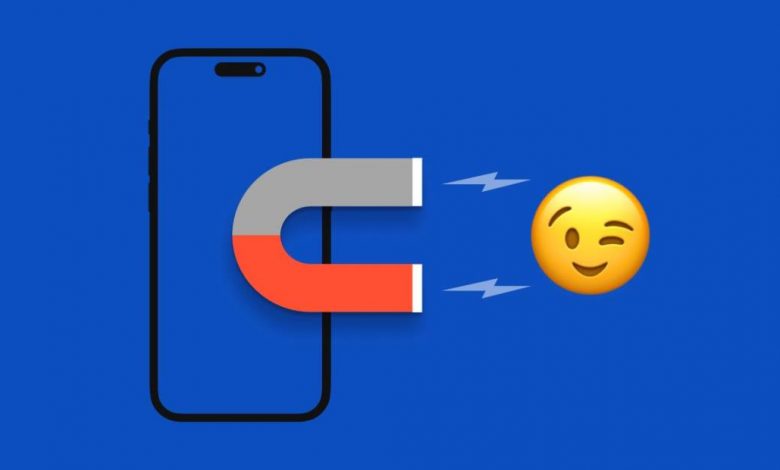10 Best Ways to Improve Mobile App Engagement

10 Best Ways to Improve Mobile App Engagement
Introduction
In today’s digital era, successful mobile apps are those that can engage users and keep them coming back for more. If you’re looking to improve the engagement of your mobile app, we have compiled a list of the top 10 strategies you can implement to achieve remarkable results.
1. Simplify User Onboarding Process
What is user onboarding?
User onboarding is the process of guiding new users through your app to ensure a smooth and positive first-time experience.
How to simplify the user onboarding process?
– Reduce the number of steps required to sign up and log in.
– Use tooltips or in-app tutorials to guide users through important features.
– Provide clear instructions and assistance when needed.
– Utilize a progress bar to convey the onboarding progress to users.
2. Personalize the User Experience
Why is personalization important for app engagement?
Personalization helps create a tailored user experience, making users feel valued and appreciated, thus increasing their engagement and loyalty towards your app.
How to personalize the user experience in your app?
– Collect user data and leverage it to provide personalized recommendations.
– Send personalized push notifications based on user preferences and behavior.
– Use dynamic content to display personalized messages and offers.
3. Optimize App Performance
Why is app performance crucial for engagement?
A slow and laggy app experience can be frustrating for users, leading to disengagement and abandonment.
How to optimize app performance?
– Regularly monitor and optimize loading times.
– Minimize app crashes and bugs through thorough testing and bug fixing.
– Optimize app design and layout to reduce resource consumption.
4. Implement Gamification Elements
What are gamification elements?
Gamification elements are game-like features added to your app to make it more enjoyable and engaging for users.
How to implement gamification elements in your app?
– Introduce challenges, badges, or rewards to motivate users to achieve certain goals.
– Include leaderboards to foster friendly competition among users.
– Use progress bars or levels to provide visual cues of user accomplishments.
5. Encourage Social Sharing
Why is social sharing important for app engagement?
By encouraging social sharing, you can increase your app’s exposure and acquire new users while also fostering a sense of community among your existing users.
How to encourage social sharing?
– Include social sharing buttons within the app.
– Offer incentives, such as unlocking exclusive content, for users who share content.
– Integrate social media sign-in options to streamline the sharing process.
6. Regularly Update Your App
Why are app updates essential for engagement?
Regular updates demonstrate your commitment to improving the app’s performance, fixing bugs, and introducing new features, thereby keeping users engaged and interested.
How to regularly update your app?
– Incorporate user feedback to identify areas for improvement.
– Monitor competitors and industry trends for inspiration.
– Release new updates at regular intervals to maintain user interest.
7. Leverage Push Notifications
Why are push notifications effective for app engagement?
Push notifications enable you to deliver timely and relevant messages directly to your users’ devices, leading to increased app usage and engagement.
How to leverage push notifications effectively?
– Personalize notifications based on user preferences and behavior.
– Trigger notifications based on specific events, such as abandoned cart reminders or new content alerts.
– Avoid sending too many notifications to prevent user annoyance.
8. Implement A/B Testing
What is A/B testing?
A/B testing involves comparing two versions of a feature or interface to determine which one performs better in terms of user engagement and conversions.
How to implement A/B testing in your app?
– Identify elements of your app that require improvement or optimization.
– Create two versions (A and B) of the selected element with a single, measurable difference.
– Randomly assign users to either version A or B and track the engagement metrics to determine the better-performing option.
9. Enhance App Social Proof
What is app social proof?
App social proof refers to the positive reviews, ratings, and testimonials left by satisfied users, which build trust and credibility for potential users.
How to enhance app social proof?
– Encourage users to leave reviews and ratings through in-app prompts.
– Respond to user reviews and feedback promptly to demonstrate your commitment to customer satisfaction.
– Share positive user testimonials on your app’s website and social media channels.
10. Offer Incentives and Rewards
Why are incentives and rewards effective for app engagement?
Incentives and rewards motivate users to engage more with your app, as they feel that they are getting something valuable in return.
How to offer incentives and rewards?
– Provide bonus points or discounts for completing specific actions or achieving milestones.
– Offer loyalty programs with exclusive benefits for regular users.
– Organize contests or sweepstakes to encourage participation.
Conclusion
Successfully improving mobile app engagement requires a strategic and multi-faceted approach. By simplifying the onboarding process, personalizing the user experience, optimizing app performance, implementing gamification elements, encouraging social sharing, regularly updating your app, leveraging push notifications, implementing A/B testing, enhancing app social proof, and offering incentives and rewards, you can significantly boost user engagement and create a loyal user base.
FAQs
Q: How long does it take to see an improvement in app engagement?
It depends on various factors, including the current state of your app, the effectiveness of the implemented strategies, and the user base. Typically, you should start seeing noticeable improvements within a few weeks to a few months.
Q: Is it necessary to implement all 10 strategies?
No, it’s not essential to implement all 10 strategies. Select the ones that align with your app’s goals and target audience, and prioritize based on your resources and available data.
Q: Can these strategies be applied to any type of mobile app?
Yes, these strategies can be applied to any type of mobile app, regardless of the industry or niche. Each strategy focuses on improving user experience and engagement, which are fundamental aspects of any successful app.
Q: How often should I update my app?
Regular updates are recommended to keep your app fresh and in line with user expectations. Aim for at least one major update every few months, with smaller updates as needed to address bugs and performance issues.
Q: Are there any risks involved in A/B testing?
A/B testing is generally a safe practice, but it’s important to carefully plan and execute the tests to minimize any potential risks. Ensure that you have a large enough sample size, and closely monitor the impact of the changes on your app’s metrics before implementing them permanently.



